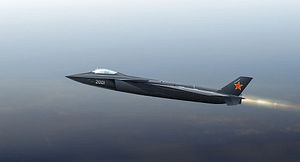The People’s Liberation Army Air Force (PLAAF) has officially commissioned its first fifth-generation fighter aircraft into service, Wu Qian, spokesperson for the Chinese Ministry of National Defense said during a press conference on September 28.
“The J-20 is China’s fourth-generation medium and long-range fighter jet. It made its maiden flight in 2011 and was first shown to the public at the 11th Airshow China in Zhuhai, Guangdong Province, in November last year,” according to the ministry. (Fourth-generation corresponds to fifth-generation fighter jets in the rest of the world. ) The flight tests are being conducted as scheduled, Wu told reporters.
With the induction of the Chengdu J-20, reportedly now called the J-20A, the PLAAF has become the second air force in the world to operate a 5th generation stealth fighter jet after the the United States, which operates Lockheed Martin F-22 Raptors or the F-35 Joint Strike Fighters.
The twin-engine fighter, built by Chengdu Aerospace Corporation, is a single seat stealth fighter designed for long-range fighter missions such as attacking support aircraft including tankers with PL-12 beyond visual range air-to-air missiles (BVRAAM).
A special testing unit of the PLAAF has been flying the J-20A for over a year. As I reported in March, China Central Television (CCTV) video footage showed a number of J-20A stealth fighters flying alongside H-6K long-range bombers and Xian Y-20 large military transport aircraft participating in a military exercise.
It is unknown how many J-20A aircraft are currently being flown by the PLAAF’s flight testing units and whether the aircraft have already been assigned to regular fighter squadrons. Some estimated put the number at six to 13. One source indicates eight J-20As prototypes and five low rate initial production fighter jets.
As I explained elsewhere, a major obstacle remains the lack of an advanced Chinese-made jet engine for the fifth-generation stealth fighter:
The domestically developed WS-15 turbofan engine, a thrust engine under development since the 1990s, has not entered serial production. It is assumed that the first patch of J-20s is equipped with an unknown variant of the Saturn AL-31, an older Russian-made jet engine. According to some sources, the J-20 is still purportedly incapable of super cruising — sustained supersonic flight.
However, Popular Science reports that images have surfaced of J-20A stealth fighter jets WS-10 turbofan engines, developed and manufactured in China. “These engines are distinguished by their serrated afterburner nozzles and interior flaps for manipulating the exhaust flow,” the article notes. The new is engine reportedly can provide 14-15 tons of thrust. The images are clear sign that China rapidly wants to break its reliance on Russian-made engines.
It will take time before the J-20A will be fully operational.
Chinese military sources have repeatedly pointed out some of the difficulties the program is still facing. “There are still a series of technical problems that need to be tackled [on the J-20], including the reliability of its WS-15 engines, [and the plane’s] control system, stealth coat and hull materials and infrared sensor,” a Chinese military official told the South China Morning Post in March.
Considerable doubts remain over the aircraft’s capabilities. “It is (…) unclear whether the J-20 can match the radar-evading capabilities of the Lockheed Martin F-22 Raptor stealth fighter aircraft or the F-35 Lightning II fighter,” I explained previously. “Given that the aircraft apparently lacks thrust vectoring, it is likely less maneuverable than American-made fifth-generation warplanes.”
































